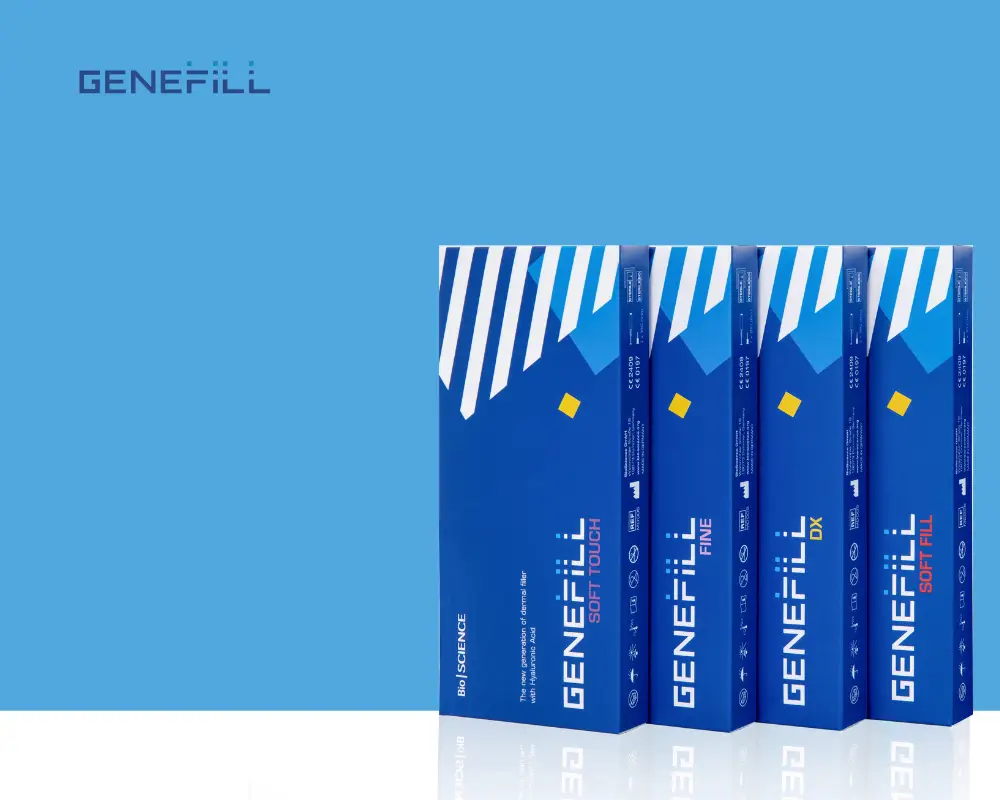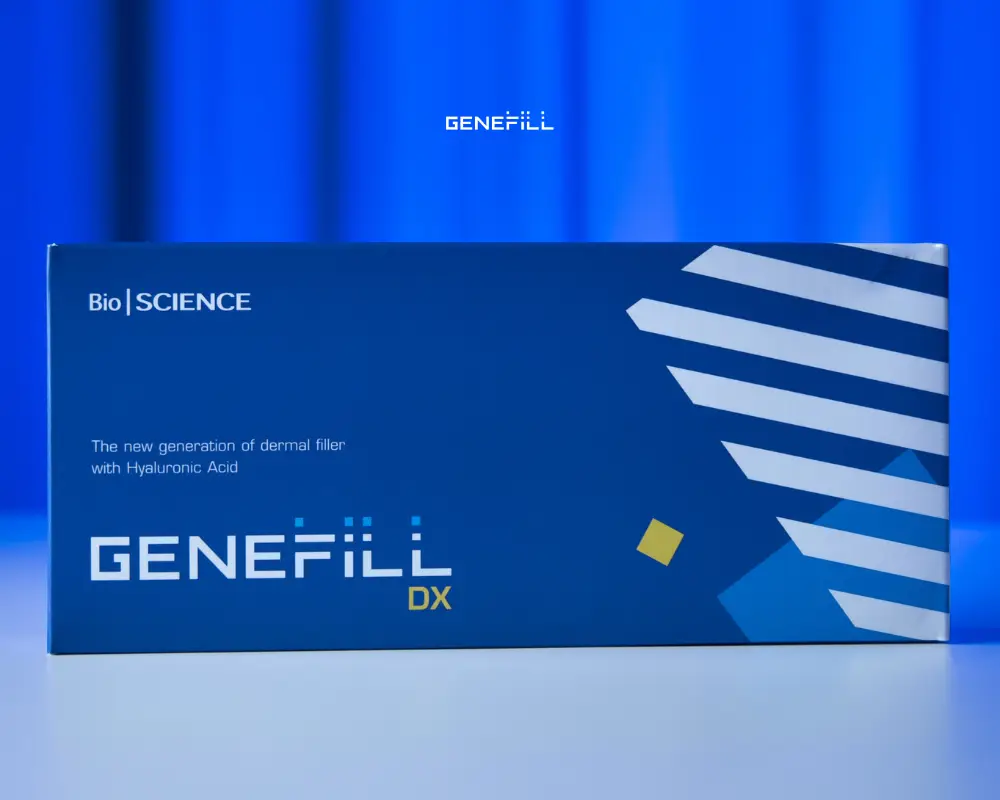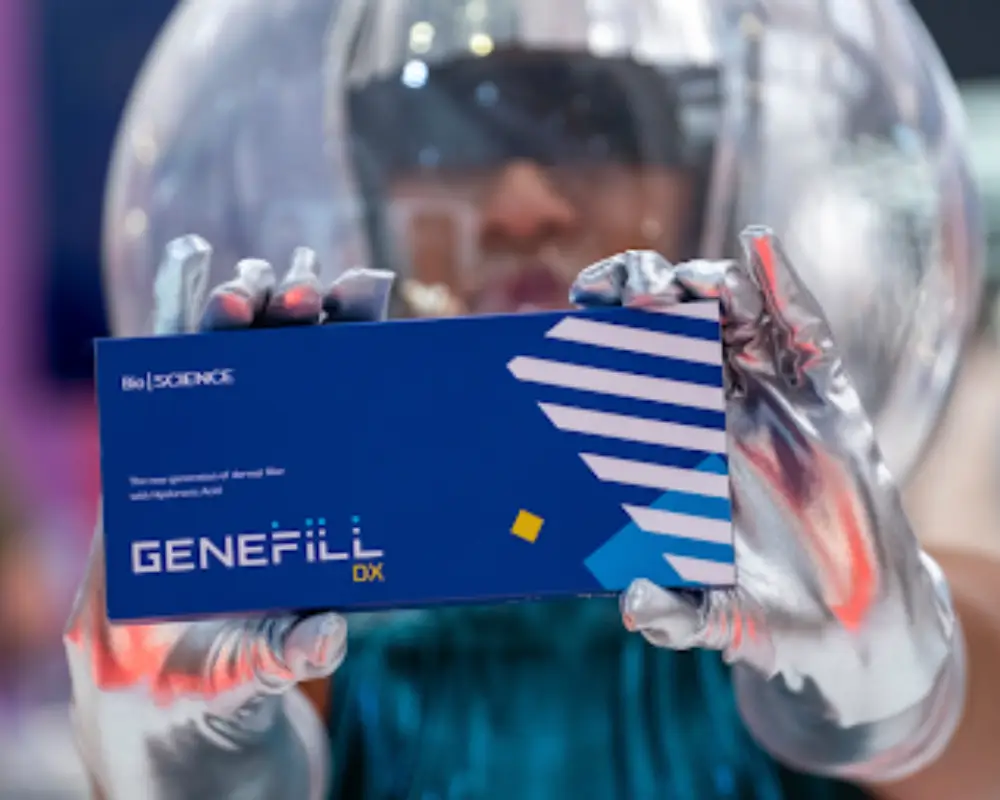Dermal fillers have become a cornerstone in aesthetic medicine, offering a safe, non-surgical way to restore volume, smooth wrinkles, and enhance facial features. As the demand for personalized, natural-looking results grows, so does the variety of fillers available. But with so many types, each with its unique properties and benefits, how do you know which one is right for you?1,2
This blog breaks down the main types of dermal fillers, explains how they work, where they're used, and what to consider when choosing one. We’ll also explore why hyaluronic acid (HA) injectables continue to lead the market, which products stand out, and what the future of aesthetics has in store for us.
What Are Dermal Fillers?
These are injectable treatments used to add volume, smooth contours, and enhance overall facial and body aesthetics. They work by replenishing what the skin naturally loses over time, such as hydration, collagen, and structural support, or by augmenting areas where patients want more definition, volume, or balance.3
Thanks to their adaptability and minimally invasive nature, dermal fillers have become an essential tool in both aesthetic medicine and anti-aging skincare, delivering personalized, natural-looking results without the need for surgery or extended downtime.1-3
Facial fillers remain the most common application, helping patients achieve a more youthful, balanced, or sculpted look with minimal downtime. However, the use of these injectables isn’t limited to the face. Certain formulations are also approved and widely used for body contouring — whether to improve the shape of the buttocks, correct hip dips, or rejuvenate the hands.
With their versatility, safety, and instant results, dermal fillers have become a go-to choice for both corrective and cosmetic improvements. Whether patients are seeking to reverse signs of aging or enhance their natural features, these injectables offer a customizable solution tailored to individual goals.
The Different Types of Dermal Fillers
Several types are used today3, each made from different materials and chosen based on their longevity, consistency, and area of application. The most commonly used filler types include:
Hyaluronic Acid (HA) Fillers
HA is a naturally occurring substance in the skin, joints, and eyes. It plays a crucial role in maintaining moisture, elasticity, and skin volume. When used as a filler, hyaluronic acid delivers immediate hydration and lift.
Its popularity stems from its high safety profile, reversibility (with the enzyme hyaluronidase), and natural integration into the skin. These can be soft and flexible for delicate areas like the lips or firmer for contouring the cheeks and jawline.
This type includes a wide variety of products that cater to different facial zones and treatment goals. Most HA fillers last between 6 to 12 months, depending on the formulation and area treated.
Calcium Hydroxylapatite (CaHA)
CaHA fillers are made from a mineral-like compound found in bones and suspended in a gel carrier. They are thicker and longer-lasting than hyaluronic acid-based options, often used for deeper lines, jawline contouring, or hand rejuvenation. CaHA also stimulates collagen production over time. However, it is not reversible and isn’t suitable for superficial areas or fine lines.
Poly-L-Lactic Acid (PLLA)
PLLA fillers are biostimulatory agents that gradually encourage collagen growth rather than creating volume instantly. They're ideal for treating volume loss in larger areas, such as cheeks or temples. The results appear gradually over several weeks and last up to two years. While effective, they require multiple sessions and careful patient selection.
Polymethylmethacrylate (PMMA)
PMMA is a semi-permanent filler composed of microspheres that remain under the skin indefinitely. It provides a scaffold for long-term collagen development and is often used for deep folds or acne scars. However, its permanence makes corrections more difficult if outcomes are unsatisfactory.
Autologous Fillers (Fat Grafting)
This approach uses the patient’s own fat, harvested from another body area, to restore volume. While natural and long-lasting, fat grafting involves surgical extraction and has a more variable success rate depending on fat survival post-transfer.
Why Hyaluronic Acid Remains the Gold Standard
Among all types, hyaluronic acid fillers are the most widely used and for good reason.4 Because HA is biocompatible and hydrophilic (attracts water), it delivers smooth, hydrated, and natural-looking results. The material’s flexibility also allows for customization, from subtle lip enhancement to more structured cheek contouring.
HA’s reversibility adds a safety layer, making it a preferred choice for first-time patients or high-risk facial zones. Its adaptability, safety profile, and immediate gratification make it the first line of choice for many aesthetic providers.
Introducing the Genefill Portfolio
Genefill, powered by BioScience, is a trusted brand of premium hyaluronic acid-based fillers designed for high performance, safety, and natural-looking outcomes. The line includes multiple formulations, each tailored for specific facial needs:
- Genefill Soft Touch: For the superficial to mid-dermis, ideal for improving skin texture and hydration
- Genefill Fine: Ideal for rejuvenating, hydrating, and smoothing the skin for an added glow
- Genefill Soft Fill: Designed for facial contouring and deeper volume restoration, perfect for mid to deep wrinkle correction.
- Genefill DX: A next-generation hybrid filler that hydrates, volumizes, and rejuvenates the skin by stimulating collagen and elastin production
Each Genefill product is formulated with highly purified, non-animal origin HA, and carries CE certifications that highlight its unmatched safety and quality.
Spotlight on Genefill DX
Genefill DX is the next generation of hybrid dermal injectables that are taking the aesthetic medicine field by storm. This biostimulatory filler is a regenerative treatment that combines cross-linked HA with dextranomer microspheres. This hybrid design delivers both immediate volumization and long-term collagen stimulation, making it ideal for patients seeking structural support and skin rejuvenation.5,6
Unlike traditional fillers that only restore volume, Genefill DX works beneath the surface to strengthen the extracellular matrix, improve elasticity, and promote tissue renewal.5,6 It’s the perfect option for those seeking early intervention (prejuvenation) or advanced anti-aging support without sacrificing natural expression.
How to Choose the Right Filler
Selecting the best filler involves more than just picking a brand.7 It’s about matching the product to your goals, anatomy, skin quality, and lifestyle. A skilled injector will assess:
- Treatment area (delicate vs. structural)
- Desired longevity
- Tissue thickness and mobility
- Risk tolerance and reversibility needs
- Personal medical history and metabolism
In some cases, a combination of fillers may be used. Layering soft HA for superficial hydration and firmer gels for deep volume. Your practitioner’s expertise is key in crafting a treatment plan that feels bespoke and balanced.
Safety Profiles & Regulation
All fillers come with potential risks like swelling, bruising, nodules, or, in rare cases, vascular occlusion.8,9 That’s why choosing certified products and experienced providers is non-negotiable. Products like Genefill are CE-marked, tested for purity, and produced with rigorous quality control. Safety should never be compromised for cost or convenience.
Final Thoughts
Dermal fillers not only offer cosmetic improvements but also represent a proactive way to age gracefully, maintain confidence, and preserve the features that make you feel like yourself. Understanding the different types that are available empowers both patients and professionals to make informed, safe, and effective choices.
Whether you’re new to aesthetic treatments or exploring options for more tailored results, HA-based products like Genefill offer a compelling blend of beauty and biocompatibility.
Ready to Learn More?
Interested in exploring which filler might be the right choice for you? Contact us, and we would be happy to help you find the perfect solution for all your facial contouring needs.
References:
- Liu J, Gao M, Hu H, Pang H, Liu Y, Zhang P. Facial Injectable Fillers in Aesthetic Medicine: Clinical Applications and Safety Strategies. Med Sci Monit. 2025;31:e949944.
- Philipp-Dormston WG, Wong C, Schuster B, Larsson MK, Podda M. Evaluating Perceived Naturalness of Facial Expression After Fillers to the Nasolabial Folds and Lower Face With Standardized Video and Photography. Dermatol Surg. 2018;44(6):826-832.
- Guo J, Fang W, Wang F. Injectable fillers: current status, physicochemical properties, function mechanism, and perspectives. RSC Adv. 2023;13(34):23841-23858.
- Fallacara A, Baldini E, Manfredini S, Vertuani S. Hyaluronic Acid in the Third Millennium. Polymers. 2018; 10(7):701.
- Ruiz N, Lopez RM, Marques R, Fontenete S. Clinical Outcomes and Safety Profile of a Dextranomer-Hyaluronic Acid Hybrid Filler: A Case Series Analysis. J Cosmet Dermatol. 2025;24(1):e16653.
- Ortiz Flores RM, Mastronardi L, Fariñas F, Fontenete S, Garcia Delgado R. Enhanced Facial Rejuvenation: Biostimulatory Effects of Hylan Gel Dermal Filler DX on Collagen Synthesis and Tissue Regeneration. Accepted for publication in Aesth Plast Surg.
- Al-Ghanim K, Richards R, Cohen S. A practical guide to selecting facial fillers. J Cosmet Dermatol. 2023;22(12):3232-3236.
- Lemperle G, Rullan PP, Gauthier-Hazan N. Avoiding and treating dermal filler complications. Plast Reconstr Surg. 2006;118(3 Suppl):92S-107S.
- Chakhachiro A, Waseem M. Risk Factor Analysis for Vascular Occlusions After Dermal Filler Injections: A Systematic Review and Meta-Analysis. Cureus. 2025;17(4):e82800.







